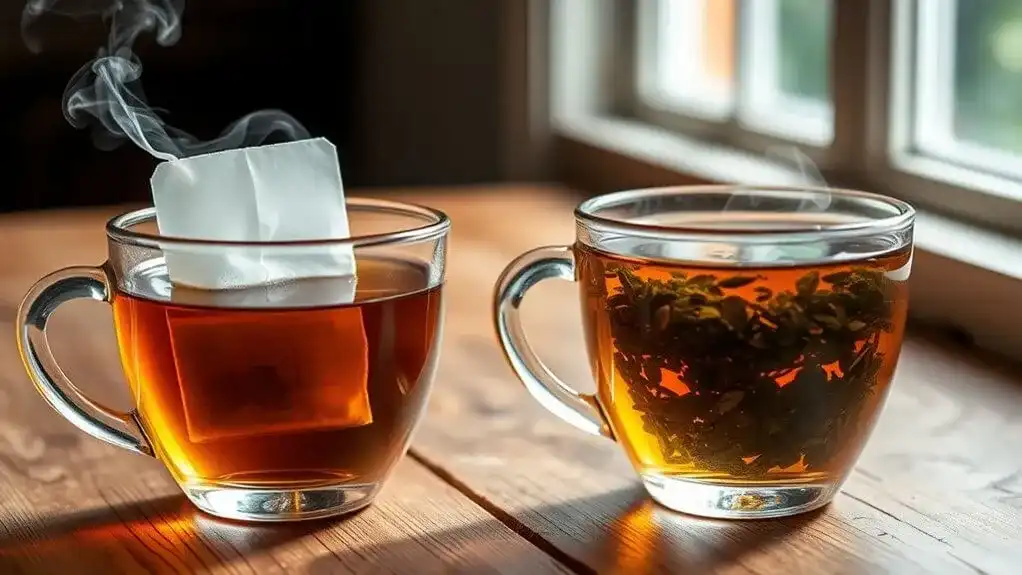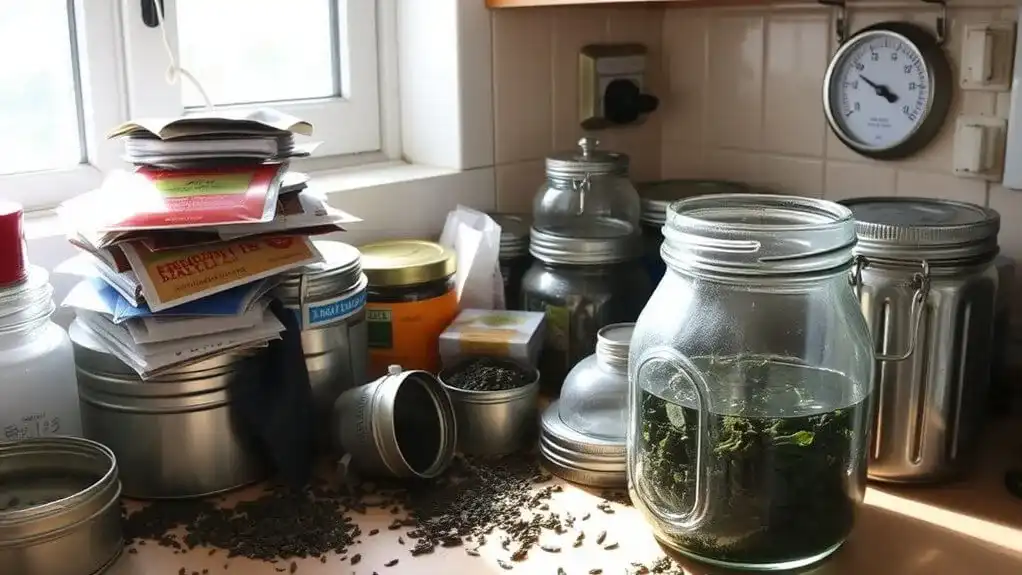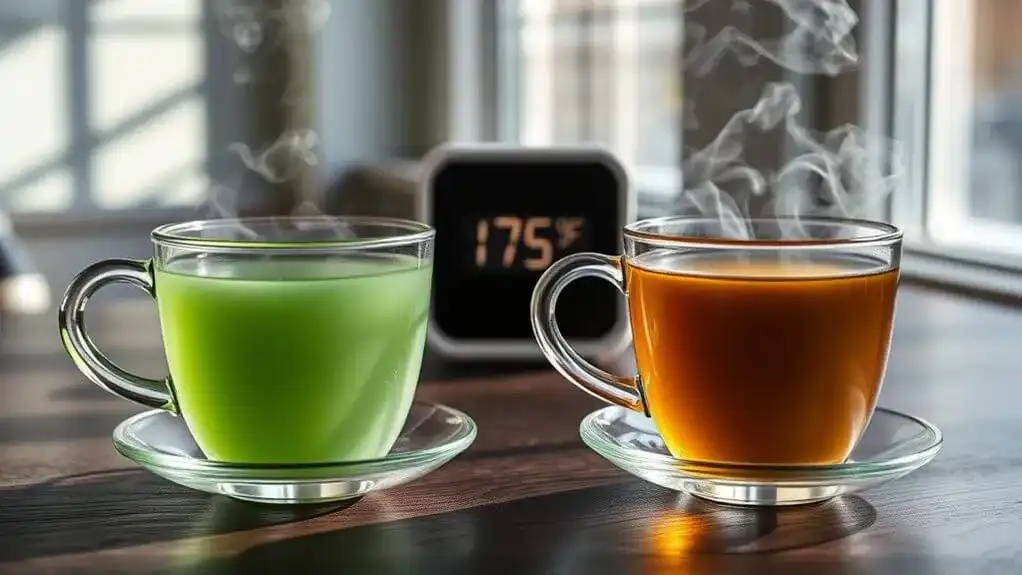There's a significant difference between tea bags and loose leaf tea that affects every sip. Loose leaf tea uses premium whole leaves that expand fully during steeping, producing complex flavors and subtle notes that tea bags can't match. Tea bags often contain lower-quality leaves, dust, and fannings, resulting in a simpler, sometimes bitter brew. Beyond taste, the choice impacts environmental sustainability and brewing experience – factors that reveal why many tea enthusiasts make the switch.
Key Points
- Loose leaf tea contains higher-quality whole leaves that expand during steeping, producing more complex and nuanced flavors than tea bags.
- Tea bags typically contain dust and broken leaves of lower quality, resulting in simpler and sometimes bitter flavor profiles.
- Loose leaf tea can be steeped multiple times and allows for customized brewing, while tea bags are single-use with limited flexibility.
- Tea bags offer greater convenience but often contain non-biodegradable materials, whereas loose leaf tea has minimal packaging and environmental impact.
- Whole loose leaf tea preserves essential oils and flavors better than tea bags, which can lose these qualities through processing.
The Quality Battle: What's Inside Your Cup
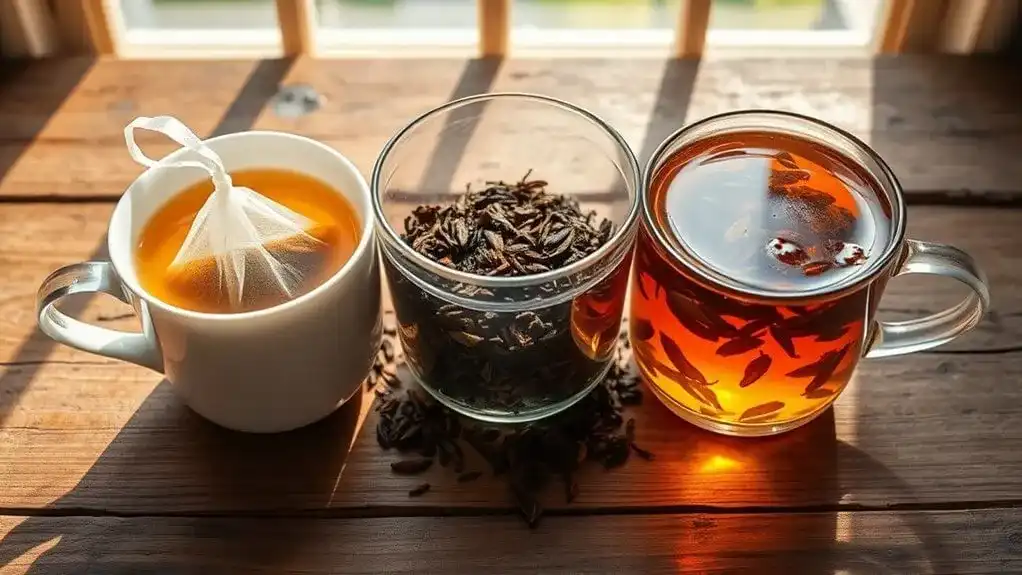
Quality control in loose leaf production prioritizes careful selection of premium leaves, ensuring a more flavorful and aromatic brew. Tea bags, however, often include stems and older leaves that wouldn't make the cut in high-grade loose leaf selections. This quality gap isn't just about taste – it affects the overall brewing experience. While tea bags prioritize convenience, they sacrifice the full-bodied flavors and complex characteristics that make whole leaf teas superior. The dust and fannings used in tea bags result in a simpler, less nuanced flavor profile compared to whole loose leaves. The increased room for leaf expansion in loose-leaf preparation allows for more nuanced taste development during steeping. Standard tea bags made with low-flow materials restrict water circulation, leading to suboptimal flavor extraction.
Flavor Profiles and Brewing Experience
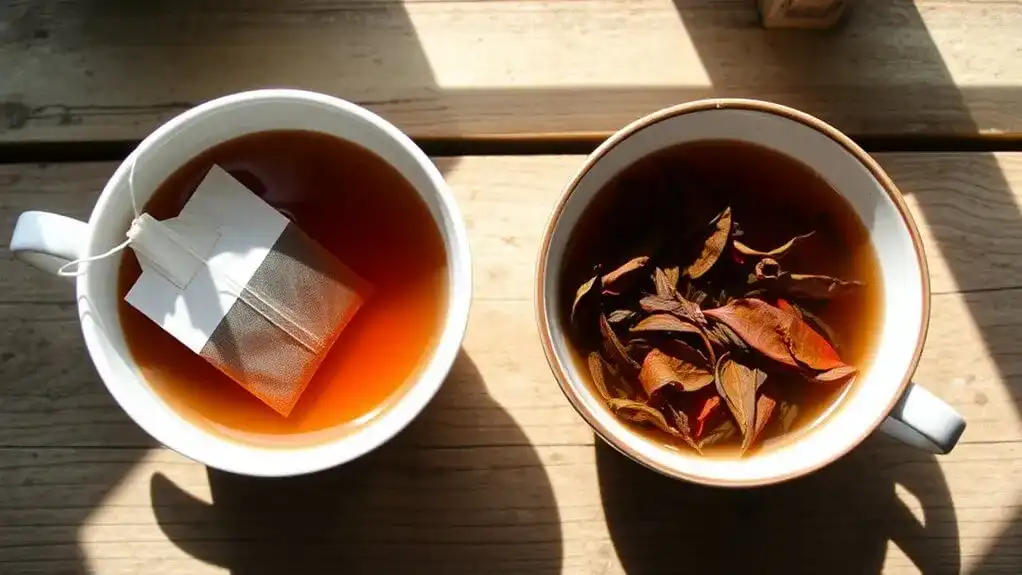
When it comes to flavor complexity, loose leaf tea stands head and shoulders above its bagged counterpart. The whole, high-quality leaves preserve essential oils and flavor nuances that are lost in the dust and fannings found in tea bags. While bagged teas often release excessive tannins that create bitter, astringent brews, loose leaf teas offer a more sophisticated taste experience. Tea enthusiasts can steep multiple times with the same loose leaves to extract additional flavors. Understanding the art of tea brewing requires trusting your instincts rather than relying solely on precise measurements and timers. Many modern tea bags contain harmful chemicals that can leach into your brew during steeping.
Different brewing techniques play a significant role in extracting the best flavors from loose leaf teas. Using tools like gaiwans or glass teacups, tea enthusiasts can precisely control steeping times and water temperatures to achieve their desired taste. This flexibility allows for experimentation and personalization, making each cup a unique experience. Whether it's delicate green teas or robust breakfast blends, loose leaf teas consistently deliver fuller, more complex flavor profiles.
Environmental Impact and Health Considerations
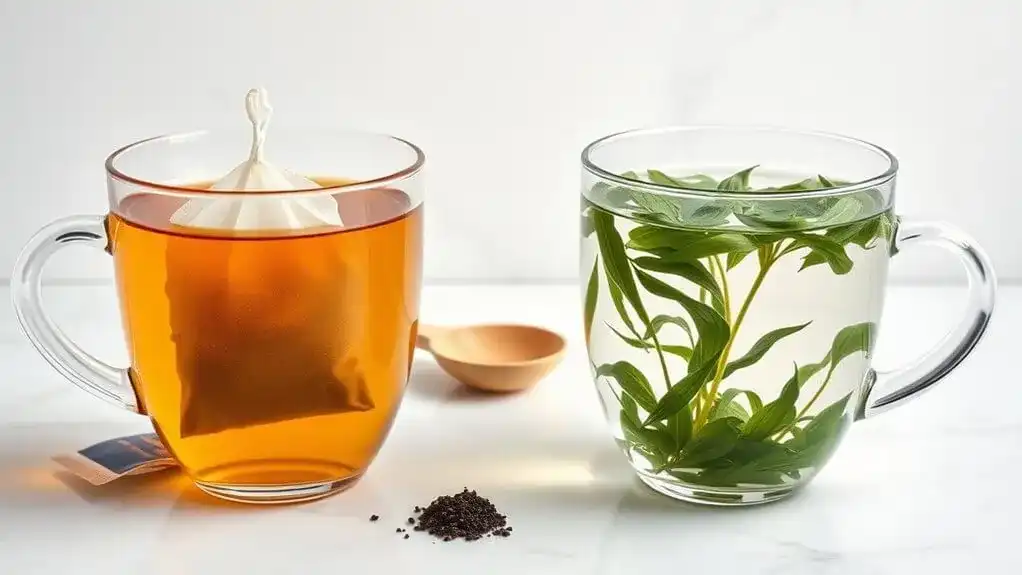
Beyond the superior taste experience, the choice between tea bags and loose leaf tea carries significant environmental implications. Tea bags often contain non-biodegradable materials and come with excessive packaging that contributes to landfill waste. Their complex production process also leaves a larger ecological footprint compared to loose leaf tea. Specialty shops offer premium loose teas that support eco-conscious consumption. Bagging your own tea means more quality control over your brewing experience. Traditional tea processing involves careful leaf oxidation to develop distinctive flavors and aromas.
While both options offer similar health benefits, loose leaf tea typically provides better antioxidant properties due to superior infusion. Though tea bags don't pose significant health risks, some contain plastic components that can leach into hot water. Loose leaf tea supports sustainable sourcing through minimal packaging and biodegradable materials. It's easily composted and often prioritizes organic farming practices. By choosing loose leaf tea and using reusable infusers, consumers can enjoy their favorite beverage while reducing environmental impact.
Practical Aspects of Tea Making
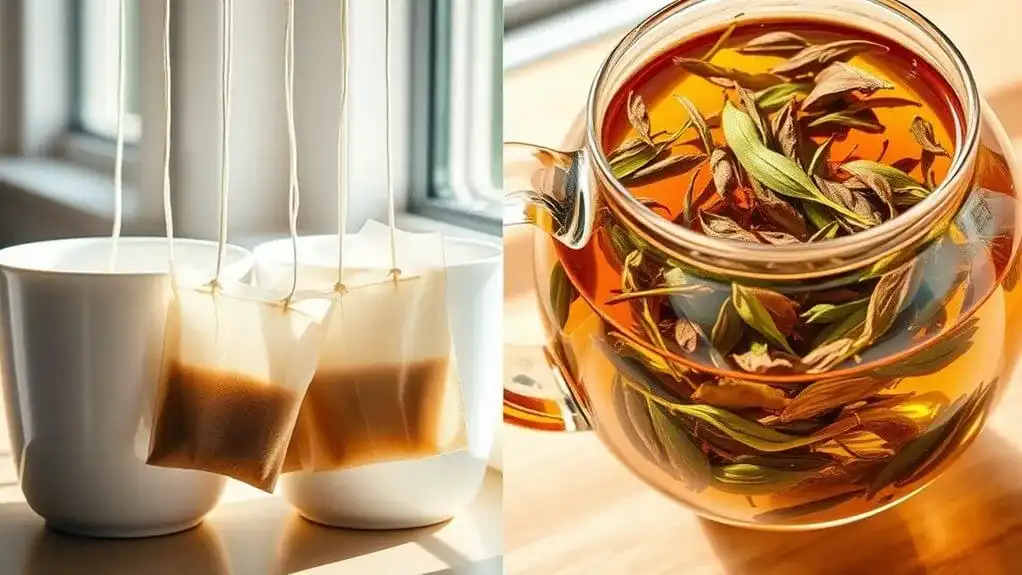
Making tea presents distinct challenges and benefits whether using tea bags or loose leaf varieties. The brewing techniques for each method differ markedly, with loose leaf requiring specialized equipment like infusers or French presses, while tea bags need only hot water and a mug. Black tea grades range from whole leaf to dust, impacting brewing results significantly. Proper tea storage in airtight containers helps preserve essential oils and flavors. Tea storage also plays an essential role in maintaining quality, regardless of the chosen format.
- Loose leaf tea offers superior control over brewing parameters and produces more complex flavors due to larger, higher-grade leaves.
- Tea bags provide unmatched convenience for daily use and travel, though they sacrifice some flavor complexity.
- Specialty equipment like pyramid-shaped sachets bridge the gap between traditional bags and loose leaf, offering improved water flow and better leaf expansion.
Both methods have their place in modern tea drinking, with the choice often depending on the specific situation and desired outcome.
The Evolution of Tea Consumption and Modern Choices

Throughout history, tea consumption has undergone remarkable transformations, evolving from its legendary discovery in ancient China to today's diverse global market. The earliest known use of tea began when Emperor Shen Nong discovered its refreshing properties by chance. While Buddhist monks and the Tang Dynasty initially shaped tea culture in China, it wasn't until European traders introduced tea to the West that global trends began to emerge.
Today's consumer preferences reflect a significant shift from traditional tea drinking. The convenience of modern tea consumption was revolutionized when Thomas Sullivan invented commercial tea bags in 1903. Health-conscious millennials are driving demand for specialty and functional teas, seeking both wellness benefits and unique experiences. The rise of specialty tea shops has created unique spaces for consumers to explore high-quality blends and immersive experiences. The market has adapted by introducing innovative blends with ingredients like turmeric and matcha, while emphasizing sustainability and convenience. Digital marketing and social media have played vital roles in this evolution, helping tea companies connect with younger audiences and showcase their products' health benefits. This modern approach to tea consumption represents a fascinating blend of ancient tradition and contemporary innovation.
Conclusion
Tea bags account for over 95% of tea sales in the US, but loose leaf tea's growing popularity reflects changing consumer preferences. While both options serve their purpose, loose leaf tea offers superior flavor complexity and environmental benefits. Whether someone's reaching for a quick tea bag or carefully steeping loose leaves, today's tea drinkers have more choices than ever to craft their perfect cup.
